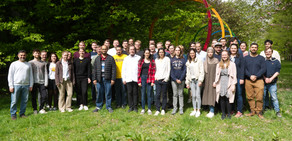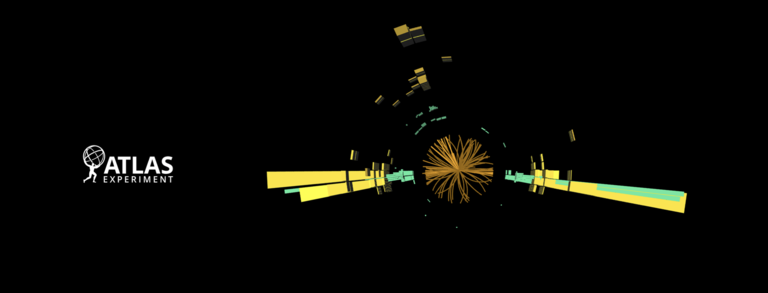Reconstruction of hadronic events
Our group focusses on the reconstruction and analysis events with hadronic final states recorded by the ATLAS experiment at the Large Hadron Collider (LHC) to test the predictions of the Standard Model (theoretical model describing elementary particles and their interactions) with high precision and to search for the smallest deviations that could provide insights into the existance of new physics.
ATLAS is one of the four large experiments at the Large Hadron Collider (LHC) at the CERN research center near Geneva. In the center of the 44 m long and 25 m high detector, protons collide at a center-of-mass energy of 13.6 TeV and provide insight into processes that took place shortly after the birth of the universe. We analyze the data that was recorded at CERN in Dortmund using complex algorithms based e.g. on machine learning.
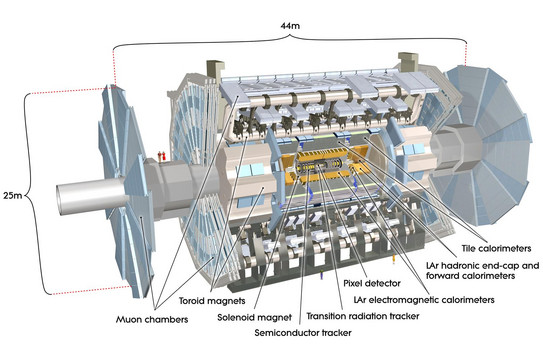
The aim of our group is to measure the coupling between the Higgs boson and the top quark, the heaviest particle of the Standard Model. The coupling is of particular interest because deviations from predictions may indicate new physics beyond the kinematic reach of the LHC. In order to be as sensitive as possible to even the smallest deviations, our group measures the top Higgs coupling in previously unexplored phase spaces using jets with high energies.
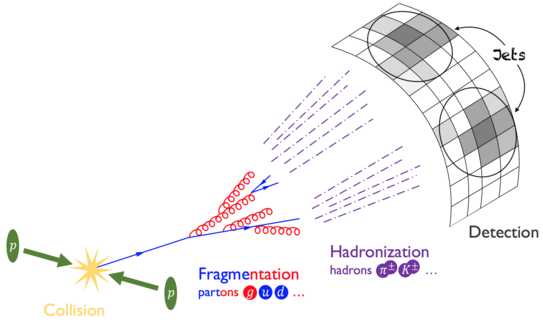
Jets arise when particles of the Standard Model decay hadronically, i.e. into quarks. The reconstruction of hadronic decays is very complex, since quarks (and gluons) cannot be observed as free particles in the ATLAS detector (confinement), but hadronize and form a multitude of colour-neutral hadrons. Hadrons are particles that are composed of two or three (anti-)quarks. The resulting bundled stream of particles is reconstructed as a jet.
The use of high-energy jets allows us to significantly suppress the background, which is much larger than the signal, by examining the inner structure of the jets, or substructure. Based on the energy distribution withing the jets, we can deduce for example their origin. A jet containing the hadronic decay of a top quark or W boson has a different substructure than a jet initiated by a single quark or gluon. Algorithms based on machine learning are used to analyze the substructure and determine the origin with high probability.
The image on the right shows an event that was recorded at the ATLAS detector. Two jets in opposite directions can be observed. The jets originate with high probability from the hadronic decay of one Z boson each. In particular, the energy depositions in the electromagnetic calorimeter (shown in green) exhibit a substructure that is typical of the decay of the Z boson into two quarks. The two strings can be imagined as one quark each.
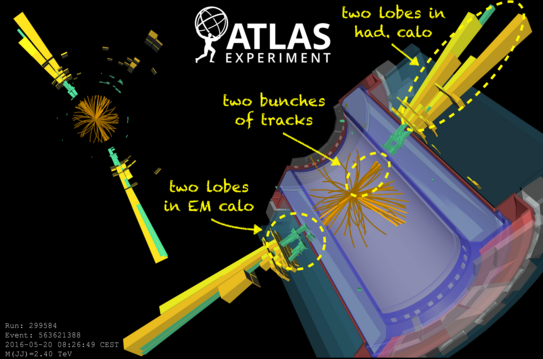
The precise resolution of the energy deposits in the jets is difficult due to the high collision rate at the LHC and the overlapping calorimeter signals from different pp collisions. Our group is working on the development of new algorithms to improve the reconstruction of hadronic signals in the calorimeter , in particular for the High-Luminosity LHC upgrade.
Our group is also involved in many other aspects of jet reconstruction and calibration that are necessary before jets can be used in precision measurements or searches for new physics.
In particular, the comparison of Monte Carlo simulated data with the real data from the LHC often shows large discrepancies and results in large systematic uncertainties. We perform precision measurements with hadronic final states, which will be used to tune Monte Carlo generators in the future. A precise description of the Standard Model by Monte Carlo generators is particularly important in order to be able to detect the smallest deviations of new physics.
Funding
Our research group is funded by the Emmy Noether Programme of the DFG: DFG 1469666862.



